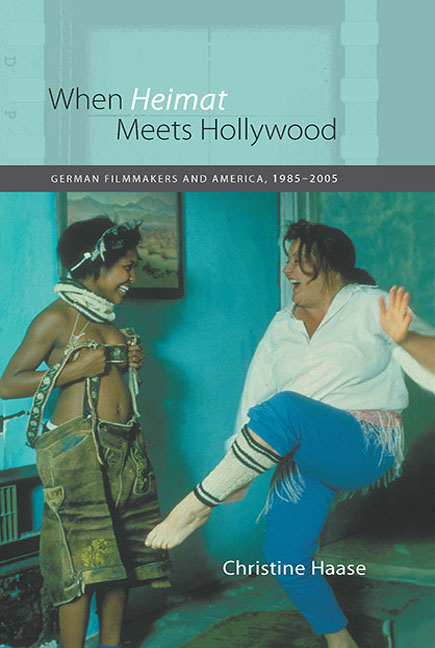Book contents
- Frontmatter
- Dedication
- Contents
- Acknowledgments
- Introduction
- 1 German and American Film Relations in the Twentieth Century
- 2 Wolfgang Petersen: Blockbuster Auteur?
- 3 “Foil, Toothpaste, ID4”: Ideology and Global Appeal in the Films of Roland Emmerich
- 4 Crossing Boundaries, Connecting People: The German-American Films of Percy Adlon
- 5 “Bambi, Zombie, Gandhi”: The Cinema of Tom Tykwer
- Conclusion
- Works Cited
- Index
2 - Wolfgang Petersen: Blockbuster Auteur?
Published online by Cambridge University Press: 11 May 2017
- Frontmatter
- Dedication
- Contents
- Acknowledgments
- Introduction
- 1 German and American Film Relations in the Twentieth Century
- 2 Wolfgang Petersen: Blockbuster Auteur?
- 3 “Foil, Toothpaste, ID4”: Ideology and Global Appeal in the Films of Roland Emmerich
- 4 Crossing Boundaries, Connecting People: The German-American Films of Percy Adlon
- 5 “Bambi, Zombie, Gandhi”: The Cinema of Tom Tykwer
- Conclusion
- Works Cited
- Index
Summary
According to his authorized biography, in the late 1940s, when he was still in elementary school, Wolfgang Petersen began devouring multiple films per week at the local cinema. At age eleven, he decided that he wanted to spend his life making movies, which to him, due to his love of westerns, seemed like a quintessentially American art form. He asked for a Super-8 camera for his twelfth birthday; the wish was granted and he began to shoot his own films. Initially, he was fascinated by productions such as High Noon (Fred Zinnemann, 1952) and the works of John Ford, whose clear and strong rendition and juxtaposition of good versus evil evidently appealed to a boy growing up in a morally, physically, and politically confused and chaotic country ravaged by war. Later on, however, Petersen was also drawn to the films of Hitchcock, Polanski, Bergman, and the French Nouvelle Vague, in particular Francois Truffaut, whom he cites as his most significant influence. Still, in an article in the Los Angeles Times in 1993, the director was quick to point out that “there's nothing German, or even particularly European about my films.” Petersen clearly felt compelled to make a strong and unequivocal statement about his filmmaking sensibilities, explicitly divorcing himself from the traditions of Film Europe and the cinematic culture in which he learned his craft. His exact reasons for doing so must remain a matter of speculation at this point. However, it is revealing that he made this statement in an interview about his soon-to-be-released film In the Line of Fire (1993). If Petersen feared any association with the filmmaking of his native country or Europe on the whole, it stands to reason that he did so out of anxiety that potential audiences would associate these traditions with century-old stereotypes, namely that German films are gloomy, artsy, sociopolitically engaged, and slow. Therefore, any such affiliation might deter American audiences and have economic consequences for the director's first big Hollywood production. Especially in light of Petersen's U.S. directorial debut Shattered (1991) — which had mostly received negative press and failed at the box office — it was imperative for In the Line of Fire to be successful if the filmmaker wanted to thrive in Hollywood.
- Type
- Chapter
- Information
- When Heimat Meets HollywoodGerman Filmmakers and America, 1985–2005, pp. 63 - 100Publisher: Boydell & BrewerPrint publication year: 2007



